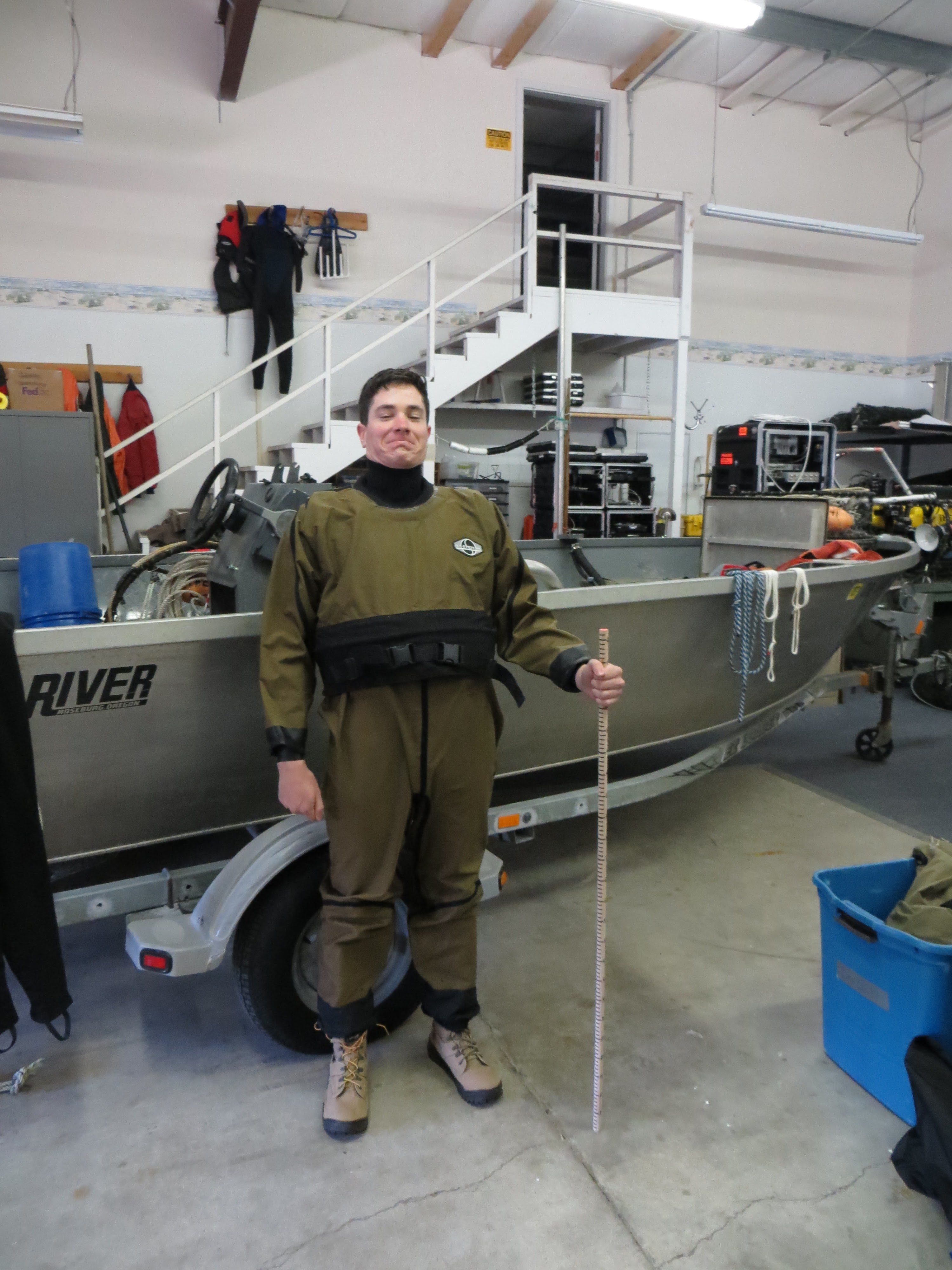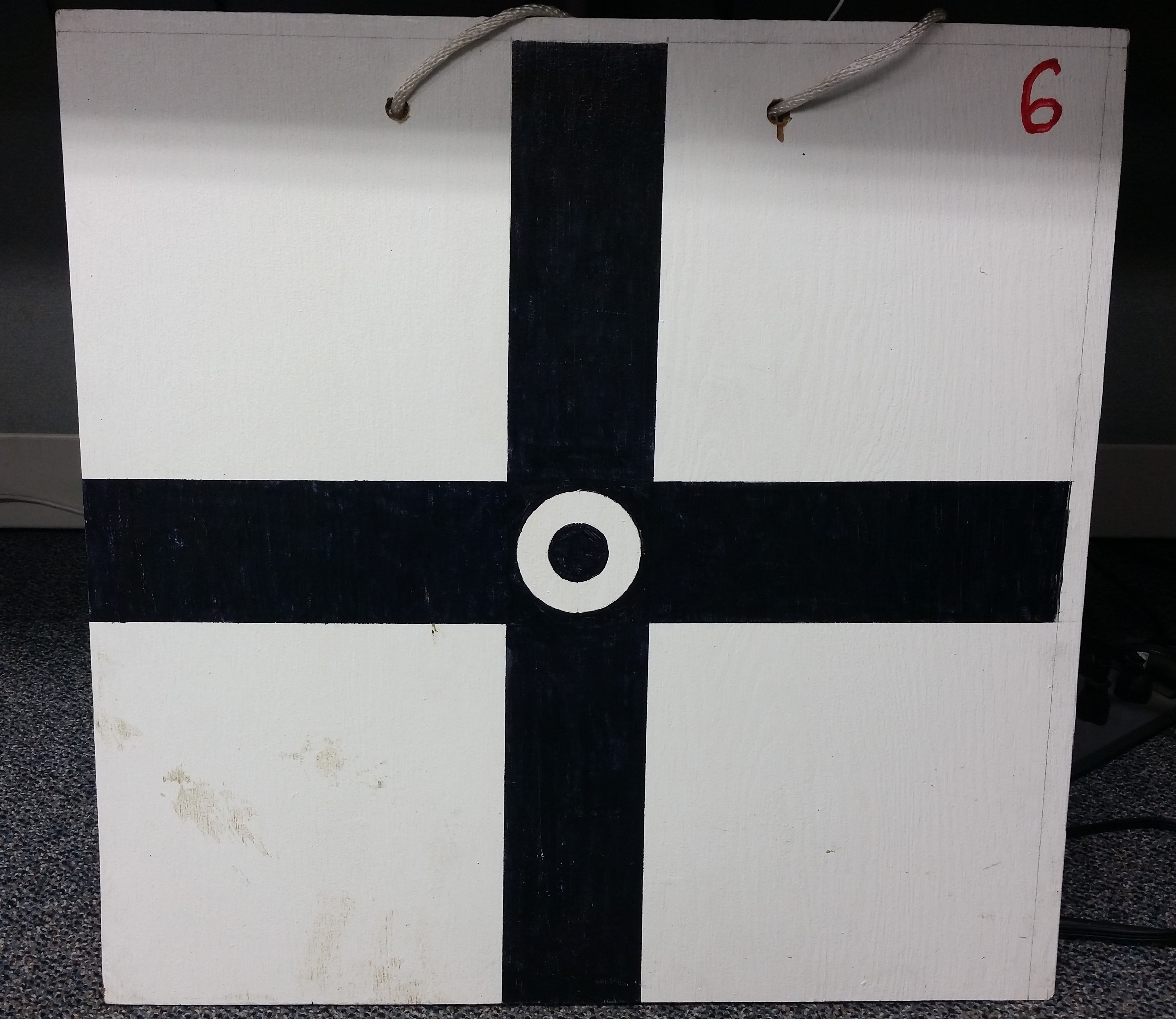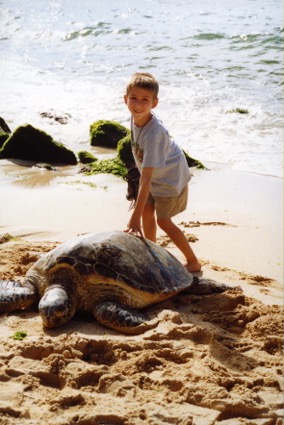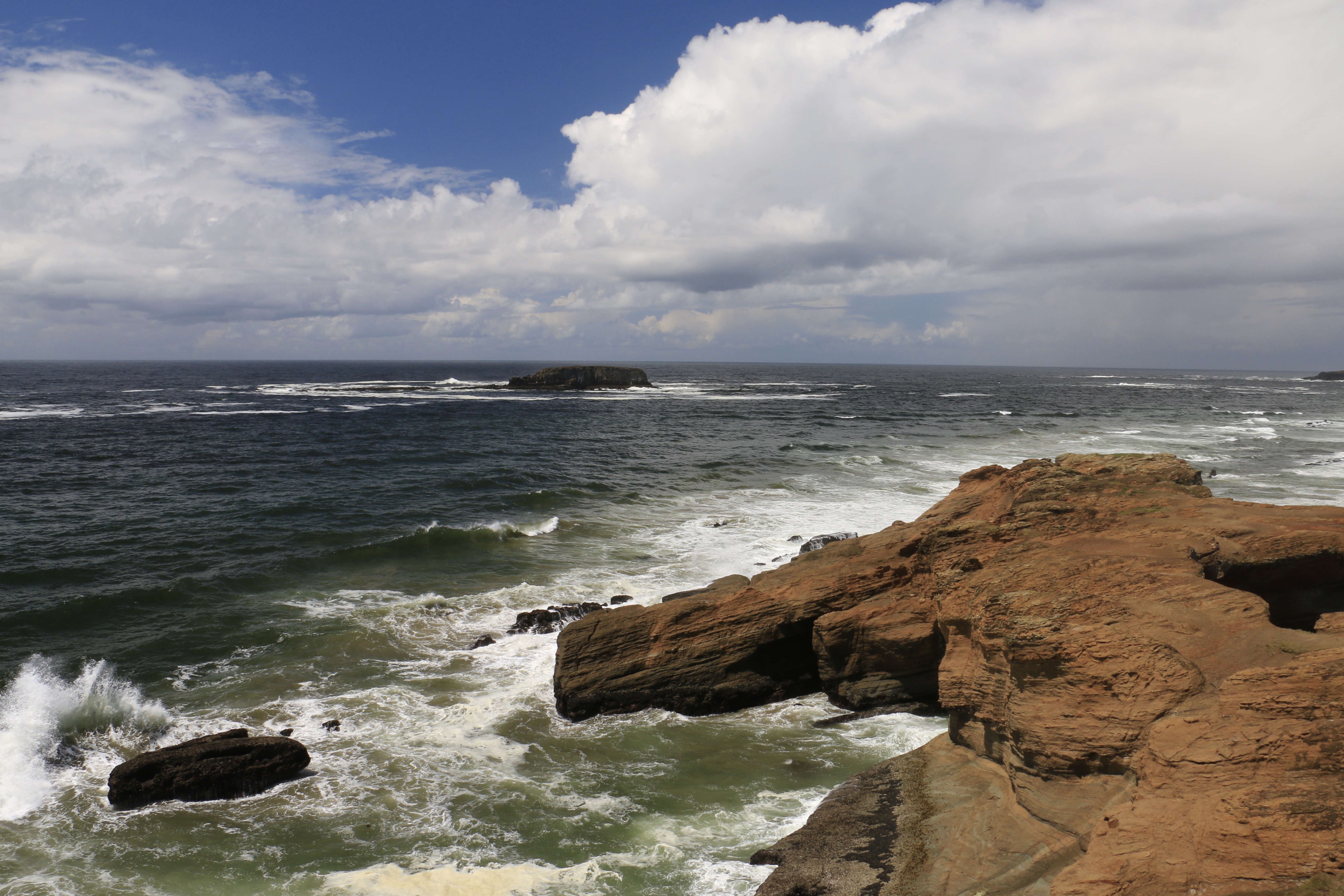My first week as an Oregon State Summer Sea Scholar has been busy, but already fulfilling. It’s impossible to document every experience that I’ve had, but looking back on my week, there are several moments that stand out. I’ll organize the post by these moments, and hopefully this will make it easier for you to read too – you can skip the less intriguing subtitles.
Part 1: “Where are the hipsters?” (A story of expectations)
I’m almost embarrassed to say that I didn’t know much about this region, or Oregon generally before I had arrived. My academic interests surround environmental policy, and I’ve studied Oregon’s history within (really, initiators of) the U.S. environmental movement, and many of their successful environmental policies are fascinating, so I wanted to learn about these aspects on the ground. But my academic research on the histories and policies of the region failed to prepare for the cultural and geographic differences from my Mid-West home. Flying in, I had no idea that there were so many mountains here! I knew about Mt. Hood, and the mountains in Washington, but mountains, a coast, and a seasonal in-land climate? Oregon, you cool. I also expected just about everyone to be wearing flannel, skinny jeans, and thick-rimmed glasses, but I don’t think I saw a one! There were plenty of Starbucks in the airport, though, and I haven’t had a shortage of coffee while here, so that expectation was met. Also no one told me how cold it was; coming from Missouri, our summers are 100 degrees and humid, but here? Highs of 65 and breezy? I can see why Nike set up shop, you can run forever! Also these trees. Man, the trees! Gorgeous conifers, towering over 70 ft! I thought just the Redwoods (which, I also got to see a “baby” Redwood on the OSU campus) could grow this tall, but their average tree here is a giant. Really helps put the world in perspective biking among this giants to work.
Mount St. Helens, the river in Newport, and my new hat
Part 2: The pokey bike ride
Speaking of biking, that brings me to my first story. So I had just arrived at my new place (also gorgeous, by-the-way — huge ceilings, two stories, queen bed with my own private bath — definitely didn’t expect any of that. Oh, also laundry is right-next-door and I have yet to see anyone else in there), and I was about ready to take my requisite daily nap, when it occurred to me that I had absolutely no food. While I wasn’t hungry then, I reasoned that by the time I woke up, biked the 10 mile roundtrip to town, and fixed my dinner, it’d be too late. Talking myself out of my nap (very hard to do), I took off down the road I was told led to Bandon (there’s only one road…). I didn’t get very far when I noticed that the seat on the bike that was donated (thanks a million, OSU!) was a bit too high (surprise, I’m really short). I bent down and realized that the only way to move the seat was with a wrench. So I piddle-paddled-peddled on down to town, choosing between bruising my tailbone and getting poked in the rear with the seat (a difficult decision). After a couple of stores, a lady (in a pharmacy, no less), directed me towards the section that included a wrench, wahlah! She was very surprised by how excited I was to find and purchase such a strange item, and so I explained my long and arduous journey. She laughed and said, “Well now you can add a wrench to your toolbox.” “Great,” I replied, “it will include one wrench.” But it was a wrench that I was able to comfortably peddle on back to my house (with some yummy groceries that I was also very excited for upon returning).
Downtown Bandon, and the infamous bike
Part 3: Person, Place, Thing (First Day on the Job)
Wow, is Bandon Dunes stunning (photos linked). I had looked up photos before coming, but nothing compared to standing out on the course, warmed by the sun, cooled by the ocean breeze, and in awe as these elements played with the seemingly-endless rolling hills, unbelievably tall trees, and sparkling sand dunes. When I first saw Bandon Dunes, it felt like I was in a dream. Every morning biking to work, it still takes my breath away as I roll through the forest, come down the hill into the resort, and its vast beauty strikes me again. Best perk: I can walk amongst this beauty during my lunch break (see photos from my lunch spot, and a few great trails that I’ve visited).
Bandon Dunes
For the actual “work”, I get to do what I love, research, for a cause I support. A bit on Wild Rivers Coast Alliance (WRCA) – they’re a local non-profit that is funded by the proceeds from Bandon Preserve, a 13-hole, 3-par course open to anyone at a much lower cost than the other courses at Bandon Dunes. Mike Keiser, the visionary, creator, and owner of Bandon Dunes, created WRCA to help give back to the community. We work with local businesses, other non-profits, and the state to fund projects that meet the “triple-bottom-line” of conservation, community, and economy. We help the south coast develop sustainably, which are exactly my academic interests. My job? Provide information to make this happen. Currently I’m working on a report of the Oregon Coast Trail that I’ll provide to Travel Oregon on how to increase the accessibility of the trail, while protecting the ecosystem that it runs though. Later, I’ll be compiling data on the tourism initiatives in the region to help develop curriculum for Oregon State’s new tourism program. I’ll also get to work with a fantastic local organization called “Washed Ashore”, which collects local sea debris and turns it into art, and then a conversation about the effects of sea litter on our ecosystems (see photo of “Henry the Fish” who lives in downtown Bandon). Basically, this position is perfect. It’s like no other “job” I’ve had before because it doesn’t feel like a job. Every day I am excited to show up and learn as much as possible to support such a great cause. Thank you to everyone who has helped to make this organization, and I am so grateful to be a part of the team.
Meet Henry, from Washed Ashore
Part 4: “Do you know how I can get to Portland?”
When I envisioned Oregon before my arrival, I guess I basically thought that it would be Portland all across the state… that’s a bad assumption. But with that assumption I also thought that I would be just fine trying to navigate around with just a bike. Oregon is bike-friendly, right? Sort of. What I didn’t realize was just how small Bandon is (the town where my program is), and just how far away it is from everything else (even my office is 2 miles from where I live, so I’m getting into some decent shape, whether I want to or not).
I’ve also been lucky enough to receive a scholarship for my tuition. I’m truly grateful, but one of a few stipulations of the scholarship is that I have to attend a workshop in the middle of the summer, meaning that I had to determine how to get from Bandon to KC and back again as quickly as possible. For my Missouri friends, I likened this task to trying to get from Camdenton (similar to Bandon) to either Springfield (like Eugene, has a smaller airport) or Kansas City (like Portland, large-ish airport with more options, but much farther away) with only a bike. Now, I lived in Camdenton for over 5 years, and I wouldn’t be able to tell someone how to do that. Do they have an Amtrak? I’m pretty sure there’s an Amtrak from Jeff City to KC, but how would you get to Jeff? Local bus from Osage Beach? And then I’m not sure if there’s a local bus from Camdenton to Osage Beach? My point is, I’ve learned what I didn’t know about myself growing up in a small town – we don’t take public transportation, because there basically isn’t any. If you live in a small town, chances are you have to commute to a larger town for most things, and so you’ll need a car, which I’m running short on. So after many conversations (a lot very similar to my description of transportation in rural Missouri), lots of google searches, and tremendous help from my travel enthusiast/saint of a grandmother, I found a route that includes a couple 30-min taxis, 2 greyhound buses, two flights, including the “red-eye” flight (1 am departure) from Las Vegas into KC, and finally a 3-hr drive to my workshop in Columbia, MO. That’s the trip out, I’m still working on getting back in since I just found out that there are no buses back to Bandon on Saturdays. I’ll keep you posted.
Looking forward: Week 2
If you’re still reading, (thanks!), you’re probably wondering about several aspects of my experience that I haven’t mentioned. This certainly isn’t close to everything that I have to talk about, including my roommates, workmates, and the wonderful people I’ve met around Bandon so far. But I’m sure I’ll fill in the gaps as the weeks progress and I continue posting. I’ve already set out some goals for the summer, for my internship, professionally, and personally, and I’m excited to share those next time!














